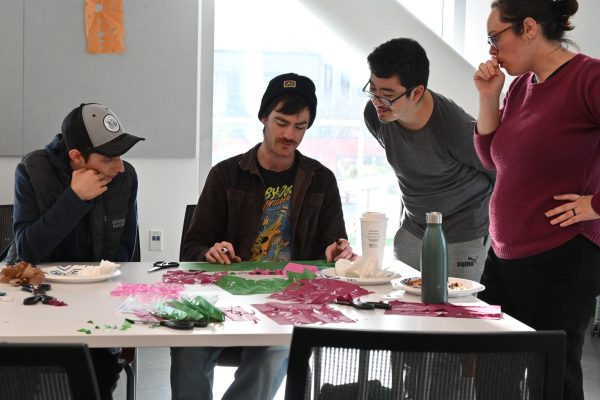Campus set to embark on new accreditation cycle
California State University, East Bay submitted a self-evaluation highlighting the campus’ strengths and weaknesses to the regional accrediting agency Aug. 7, completing the first phase of a new three-part accreditation cycle meant to ensure that the university is providing a quality and effective education.
Western Association of Schools and Colleges, one of seven regional accrediting agencies, regularly evaluates “institutional resources, structures, practices and results” to provide “assurance to the public that institutions of higher education continue to warrant public trust and support,” according to the 2001 WASC Handbook of Accreditation.
The recent controversies surrounding City College of San Francisco’s accreditation and the deceptive reporting tactics of for-profit education companies, have increased public scrutiny of the accreditation process, especially since accredited institutions are eligible to receive “more than $150 billion each year in direct loan and grant aid,” according to ‘The President’s Plan for A Strong Middle Class and A Strong America,’ a plan that was released shortly after the 2013 State of the Union Address.
Amid public pressure, Congress passed the Advancing Competency-Based Education Demonstration Project Act of 2014 last month, calling for increased attention to measuring “knowledge, skills and experience through assessments,” completion and retention rates, and costs to students.
“Nationwide there’s been a big change in accreditation,” said Susan Opp, associate vice president of academic programs and graduate studies. “There’s a lot more emphasis on accountability.”
The standards for accreditation began to change in the 90’s in response to a shifting educational climate that included concerns ranging from increased costs to the “development and growth of online and distributed learning,” according to the 2001 Handbook.
“It used to be in the past that the emphasis was on inputs, and now it’s what are the results, what are they learning,” Opp said.
An institution receives accreditation only after it demonstrates it meets or exceeds the four standards of accreditation centered on WASC’s three core commitments to student learning and success, quality and improvement, and institutional integrity, sustainability and accountability.
A university must also show a commitment to institutional improvement and periodic self-evaluation to promote “a culture of evidence where indicators of performance are regularly developed and data collected to inform institutional decision making, planning and improvement,” according to the 2001 handbook.
WASC evaluates the institution as a whole instead of looking at individual programs, meaning some programs require accreditation from a separate entity. For instance, the American Chemical Society accredits a Bachelor of Science program in Chemistry.
The self-study is the crux of the accreditation process, serving as the primary evaluation tool for the off-site review scheduled to take place via phone conference on Oct. 30 with CSUEB representatives, such as Opp who is the accreditation liaison officer.
CSUEB showed improvement in the areas of diversity, innovation, assessment, regional stewardship and providing leadership in Science Technology Engineering and Mathematics Education since the 2011 interim report, but showed need for improvement in retention and graduation rates, maintenance of meaningful assessment, data access and analysis, and expanding faculty and staff, according to the self study.
After the off-site review, the evaluation team will give CSUEB a report on its strengths and weaknesses, priorities for the on-site review and questions that arose that may require additional evidence or clarification, according to the 2013 handbook.
The on-site review scheduled to take place April 8-10 will allow the evaluation team to get a feel for the campus and follow up on concerns that arose during the initial review.







